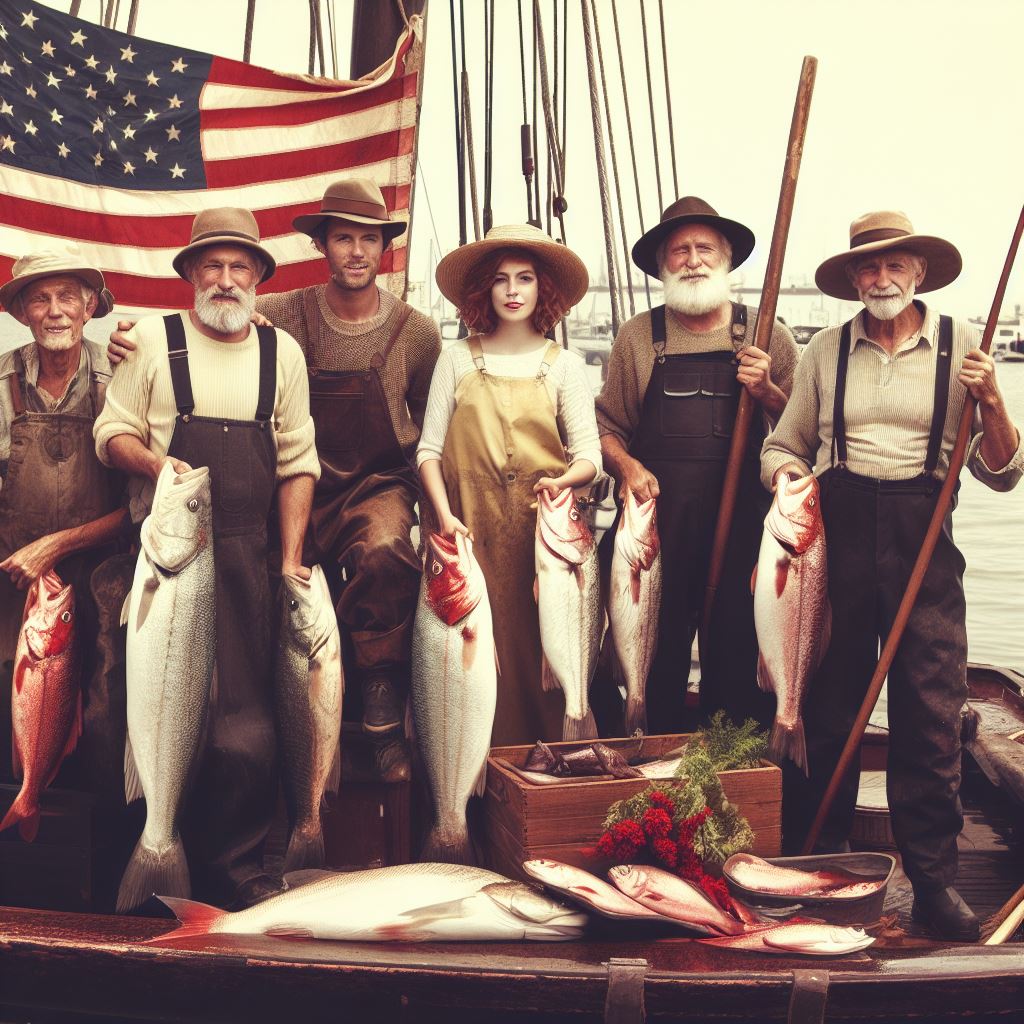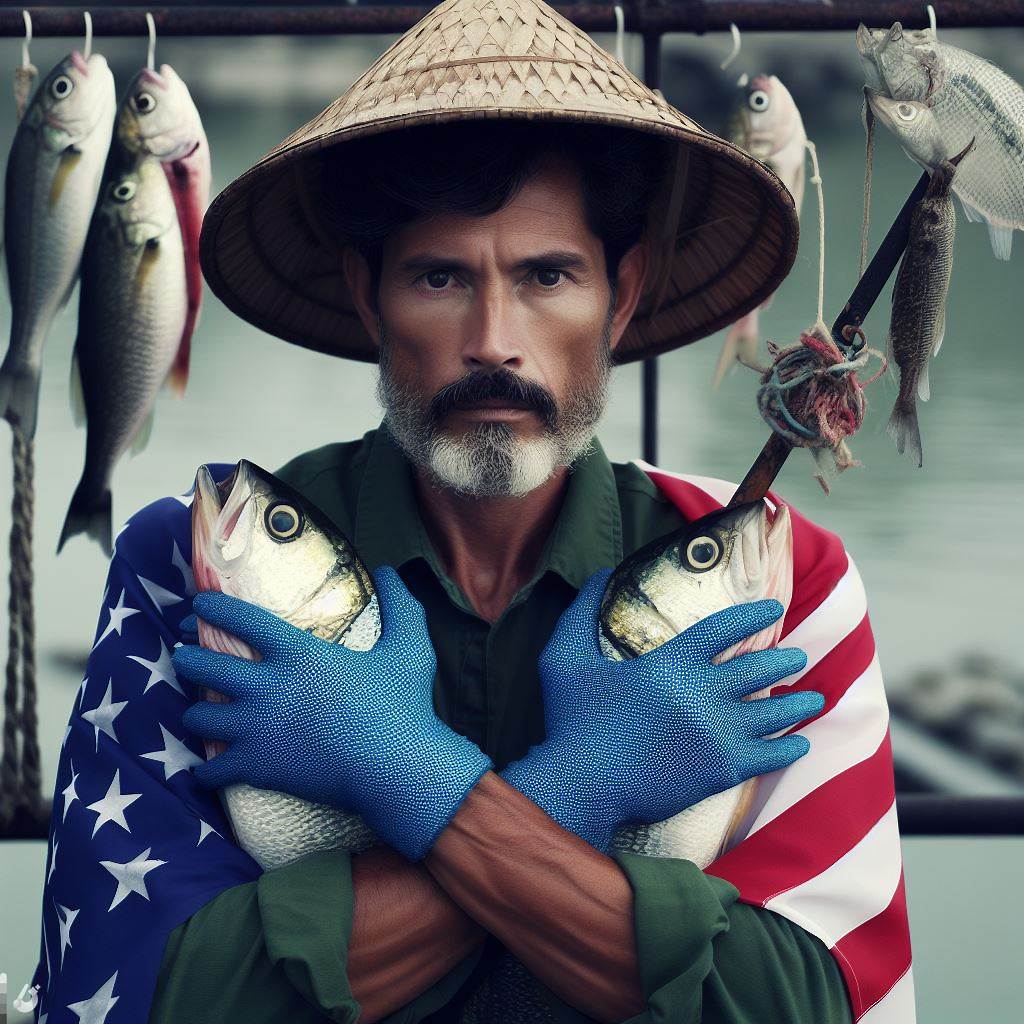Introduction
In this blog post, we will explore the concept of sustainable fishing practices and their significance in maintaining marine ecosystems.
Sustainable fishing practices refer to methods that ensure the long-term viability of fish stocks, while minimizing damage to the marine environment.
These methods include catch limits, gear regulations, and habitat protection.
Maintaining marine ecosystems is crucial for biodiversity and the overall health of our oceans. Sustainable fishing practices play a key role in achieving this goal.
By preventing overfishing and protecting habitats, we can preserve the delicate balance of marine ecosystems and ensure the survival of various species.
Over the years, the United States has made significant efforts and achieved significant milestones in promoting sustainable fishing practices.
Through collaboration with fishermen, scientists, and policymakers, the U.S. has implemented various management measures to address overfishing and conserve fish stocks.
One of the notable achievements in U.S. sustainable fishing practices is the implementation of the Magnuson-Stevens Fishery Conservation and Management Act.
This legislation provides a framework for science-based fishery management, ensuring that fishing activities are sustainable and balanced.
Additionally, the U.S. has established numerous marine protected areas and fishery reserves to safeguard critical habitats and help rebuild depleted populations.
These protected areas serve as sanctuaries for fish and other marine organisms, allowing them to reproduce and replenish their numbers.
Overall, sustainable fishing practices are essential for maintaining the health and productivity of marine ecosystems.
The U.S. has demonstrated its commitment to this cause through legislation, conservation measures, and collaborative efforts.
However, continuous efforts and international cooperation are necessary to ensure a sustainable future for our oceans.
Overview of US efforts towards sustainable fishing
Introduction to the Magnuson-Stevens Fishery Conservation and Management Act
The Magnuson-Stevens Fishery Conservation and Management Act (MSA) is a landmark legislation passed in 1976.
It provides a comprehensive framework for sustainable fisheries management in the United States.
The act aims to prevent overfishing, rebuild overfished stocks, and ensure long-term sustainability of marine resources.
Establishment of regional fishery management councils
The MSA established eight regional fishery management councils across the US.
These councils consist of experts, stakeholders, and representatives from each region’s fishing industry.
The primary role of these councils is to develop and implement fishery management plans in their respective regions.
Transform Your Career Today
Unlock a personalized career strategy that drives real results. Get tailored advice and a roadmap designed just for you.
Start NowImplementation of annual catch limits
One of the key provisions of the MSA is the requirement for setting annual catch limits (ACLs).
ACLs are science-based limits that determine the maximum allowable amount of fish that can be caught in a year.
By setting ACLs, the US aims to prevent overfishing, rebuild overfished stocks, and ensure sustainable harvests.
Monitoring and enforcement measures
The US employs various monitoring and enforcement measures to ensure compliance with fisheries regulations.
The National Marine Fisheries Service (NMFS) monitors commercial and recreational fishing activities.
Satellite-based vessel monitoring systems, observer programs, and catch reporting are some of the tools utilized.
Enforcement efforts include inspections, patrols, penalties, and collaborations with state and international partners.
These measures help deter illegal fishing, ensure compliance, and protect vulnerable fish populations.
All in all, the US has made significant efforts and achieved milestones in sustainable fishing practices.
The Magnuson-Stevens Fishery Conservation and Management Act serves as the foundation for these efforts.
The establishment of regional fishery management councils ensures localized decision-making and stakeholder involvement.
Implementation of annual catch limits enables effective fisheries management and prevents overfishing.
Moreover, robust monitoring and enforcement measures help maintain compliance and protect marine resources.
These collective efforts contribute towards sustainable fishing practices, leading to healthier oceans and fishing communities.
Read: Types of Fisheries in the US: Commercial vs. Sport
Achievements in US sustainable fishing practices
Recovery of overfished species
- Examples of successfully rebuilt fish populations.
- Impacts of population recovery on ecosystems
Reduction of bycatch
- Initiatives to minimize accidental catching of non-target species.
- Technological advancements to reduce bycatch.
- Positive outcomes of bycatch reduction efforts.
Over the years, the United States has made significant progress in implementing sustainable fishing practices, leading to various achievements in the field.
Recovery of overfished species
One of the notable achievements in US sustainable fishing practices is the successful recovery of overfished species.
Through careful management and conservation efforts, several fish populations have rebounded.
For instance, the population of the Atlantic scallop, once in a severely depleted state, has made a remarkable recovery.
Strict catch limits, habitat protection, and effective monitoring and enforcement have contributed to the restoration of this important species.
Transform Your Career Today
Unlock a personalized career strategy that drives real results. Get tailored advice and a roadmap designed just for you.
Start NowSimilarly, the Gulf of Mexico red snapper population has also experienced positive recovery.
The implementation of science-based fisheries management strategies, such as size limits and fishing season restrictions, has allowed this species to bounce back from dangerously low levels.
The recovery of overfished species not only benefits the targeted fish populations but also has positive impacts on ecosystems.
As the fish populations rebound, the balance within the marine environment is restored.
Reduction of bycatch
Another accomplishment in US sustainable fishing practices is the reduction of bycatch.
Bycatch refers to the accidental catching of non-target species, which can lead to unnecessary harm to marine biodiversity.
To address this issue, the US has implemented various initiatives aimed at minimizing the accidental capture of non-target species.
These include the use of alternative fishing gear, the establishment of protected areas, and the implementation of seasonal closures.
Technological advancements have also played a crucial role in reducing bycatch.
Innovation in fishing gear, such as the development of escape panels in trawls, has allowed fishermen to selectively catch their intended species while reducing the capture of non-target species.
These efforts have yielded positive outcomes, not only in terms of conservation but also economically.
By reducing bycatch, fishermen can maximize their target catch and minimize wasteful practices.
In fact, the US has achieved significant milestones in sustainable fishing practices.
The successful recovery of overfished species and the reduction of bycatch demonstrate the effectiveness of conservation measures and innovative approaches in safeguarding marine ecosystems.
Read: The Economic Impact of Fishing on America’s Economy

Collaborations and partnerships in sustainable fishing
In addition to national efforts, the United States recognizes the importance of collaborations and partnerships in achieving sustainable fishing practices.
Cooperation with international organizations
Participation in regional fishery management organizations
The United States actively participates in various regional fishery management organizations (RFMOs), such as the International Commission for the Conservation of Atlantic Tunas (ICCAT) and the Western and Central Pacific Fisheries Commission (WCPFC).
Through these organizations, the U.S. collaborates with other countries to develop and implement sustainable fishing regulations.
This includes setting catch limits, establishing fishing seasons, and implementing monitoring and enforcement measures.
By actively engaging in RFMOs, the United States ensures that its fishing practices align with international standards and contribute to the conservation of shared fish stocks.
Transform Your Career Today
Unlock a personalized career strategy that drives real results. Get tailored advice and a roadmap designed just for you.
Start NowJoint efforts to combat illegal, unreported, and unregulated fishing
The United States recognizes the global impact of illegal, unreported, and unregulated (IUU) fishing, as it undermines conservation efforts and threatens the sustainability of fisheries worldwide.
To address this issue, the U.S. collaborates with international organizations, such as the Food and Agriculture Organization of the United Nations (FAO) and INTERPOL, to combat IUU fishing.
Through information sharing, capacity building, and coordinated enforcement actions, the United States and its partners work together to detect, deter, and eliminate IUU fishing activities.
Engagement with local fishing communities
Involvement in collaborative research and management
The United States recognizes the valuable knowledge and expertise of local fishing communities in sustainable fisheries management.
By involving these communities in collaborative research and management initiatives, the U.S. benefits from their traditional ecological knowledge and ensures that decisions are informed by both scientific data and local perspectives.
Through partnerships with fishing communities, the United States implements effective management strategies, such as gear modifications and area closures, that enhance the sustainability of fish populations and minimize the impact on habitats.
Initiatives to support sustainable livelihoods for fishermen
The United States acknowledges the importance of supporting the economic well-being of fishing communities while promoting sustainable fishing practices.
Initiatives such as the Community Development Quota (CDQ) program in Alaska provide local communities with a share of the total allowable catch and financial resources to invest in economic development projects.
By empowering fishing communities and diversifying their income sources, these initiatives reduce the pressure on fisheries and contribute to sustainable livelihoods for fishermen.
In short, the United States actively collaborates with international organizations and engages with local fishing communities to achieve sustainable fishing practices.
Through partnerships and cooperative efforts, the U.S. contributes to the conservation of marine resources, the protection of livelihoods, and the promotion of responsible fishing practices on a global scale.
Read: Understanding the Licensing System for US Fishermen
Challenges and future steps
In order to achieve long-term sustainability in fishing practices, it is important to address emerging challenges and implement future strategies for further improvement.
This section will discuss the challenges that the fishing industry faces today and the steps that can be taken to ensure sustainable fishing practices for the future.
Emerging sustainability challenges in fisheries
Climate change impacts on fish populations
The effects of climate change, such as rising sea temperatures and ocean acidification, have a significant impact on fish populations.
These changes in their environment can affect their reproductive patterns, migration routes, and overall abundance.
Market demand for sustainable seafood
Consumers are becoming increasingly aware of the importance of sustainable seafood and are demanding more responsibly sourced products.
This puts pressure on the fishing industry to adopt sustainable practices and ensure that their products meet the growing market demand.
Future strategies for further improvement
Enhancing ecosystem-based management approaches
Ecosystem-based management focuses on the interactions and interdependencies between species and habitats within an ecosystem.
By taking a holistic approach to fisheries management, we can better protect and restore fish habitats, as well as maintain healthy populations.
Transform Your Career Today
Unlock a personalized career strategy that drives real results. Get tailored advice and a roadmap designed just for you.
Start NowPromoting sustainable aquaculture practices
As the demand for seafood continues to rise, promoting sustainable aquaculture practices can help alleviate the pressure on wild fish populations.
Responsible aquaculture practices should prioritize environmental sustainability, animal welfare, and the use of eco-friendly feed.
By implementing these future strategies, the fishing industry can make significant progress towards achieving sustainable fishing practices.
Enhanced ecosystem-based management approaches can help maintain healthy fish populations and preserve the overall health of marine ecosystems.
Promoting sustainable aquaculture practices can provide an alternative to wild-caught fishing and help meet the growing demand for seafood without further depleting natural resources.
However, these strategies will require collaboration and commitment from all stakeholders involved, including governments, fisheries, seafood suppliers, and consumers.
It is important to ensure that regulations and policies are in place to support sustainable fishing practices and that consumers are educated about the importance of making sustainable seafood choices.
In essence, the fishing industry is faced with emerging challenges related to climate change impacts and market demand for sustainable seafood.
In order to address these challenges, future steps should focus on enhancing ecosystem-based management approaches and promoting sustainable aquaculture practices.
By taking these steps, we can work towards achieving long-term sustainability in fishing practices and ensure the health of our oceans for generations to come.
Read: Technological Advancements in US Fishing Industry
Conclusion
Recap of US achievements in sustainable fishing practices:
The United States has made significant progress in implementing sustainable fishing practices, ensuring the long-term viability of our oceans and marine resources.
Through the establishment of regulations, monitoring programs, and collaborative efforts with stakeholders, the US has successfully improved the sustainability of its fishing industry.
This includes the implementation of catch limits, habitat protection, and species-specific management plans.
As a result, overfished stocks have been rebuilt, ecosystems have begun to recover, and fishing communities have thrived.
Call to action for continued support and improvement in sustainable fishing efforts
While the achievements are commendable, the work towards sustainable fishing practices is far from over.
It is crucial that we continue to support and improve these efforts to ensure the long-term health of our oceans.
This can be done through continued funding for research and monitoring, strict enforcement of regulations, and the engagement of all stakeholders, including fishermen, scientists, policymakers, and consumers.
By making sustainable seafood choices, advocating for responsible fishing practices, and supporting initiatives that promote sustainable fishing, we can collectively contribute to the preservation of our marine ecosystems and the livelihoods of fishing communities.




